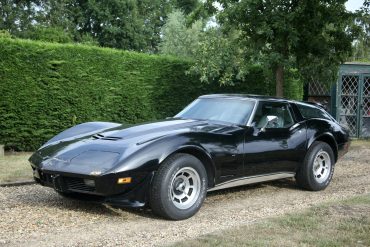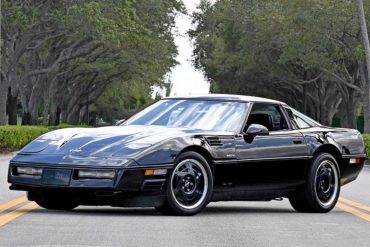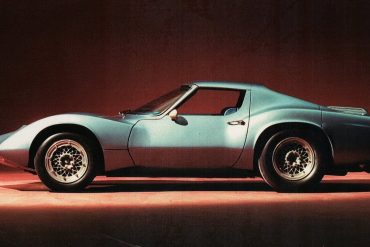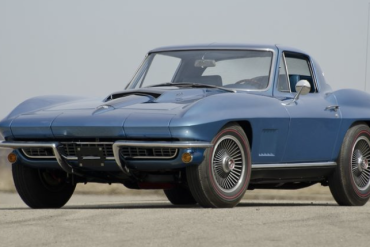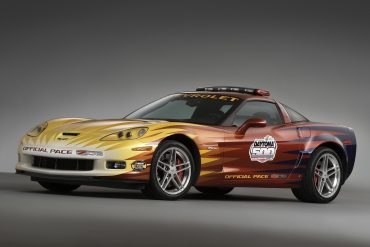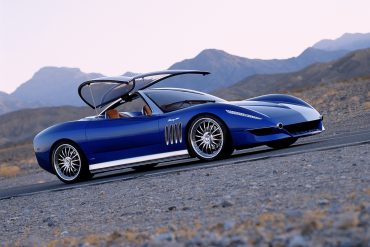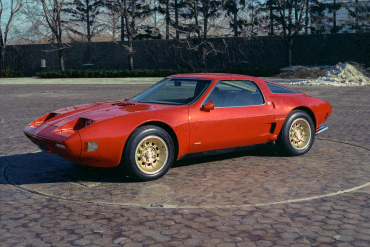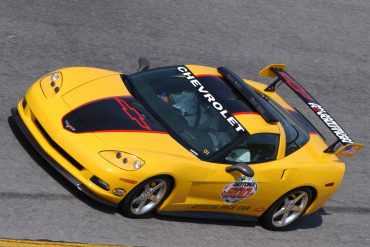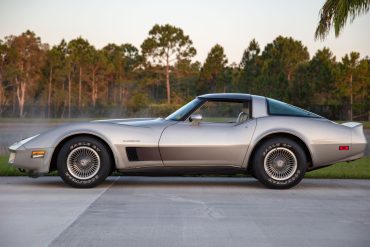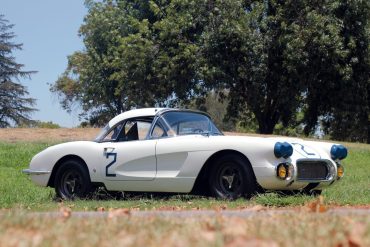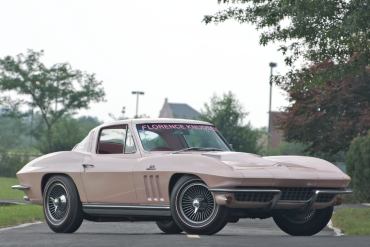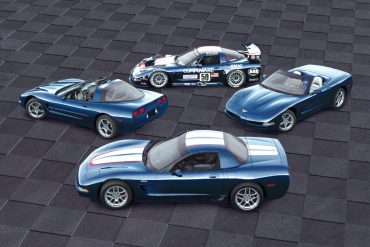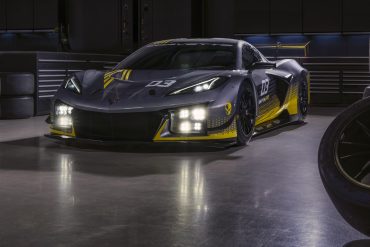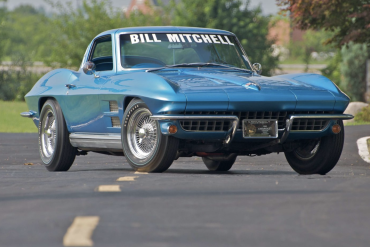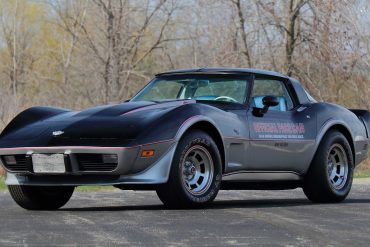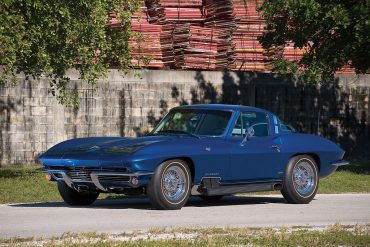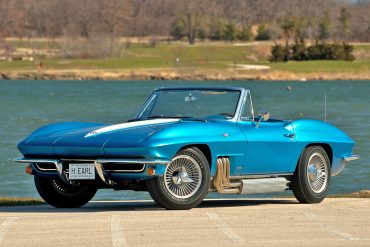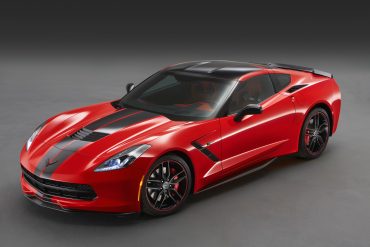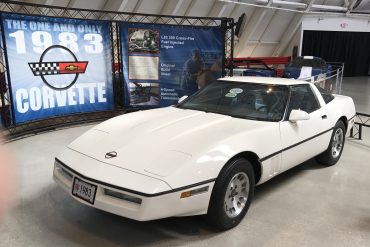Greenwood didn’t just build Corvettes for the track, constructing a variety of different street car kits over the years. The story goes that the original ’wagon concept was commisioned by a drummer who wanted a Vette with enough cargo space to haul his drums to various gigs. Since the demise of the Corvette trunk, easily accessible cargo areas were definitely on the wish list for many enthusiasts. Chuck Miller designed and built this first Shark-era Sportwagon.
This vehicle pioneered the advantages of “Active Suspension” and had GTP Corvette race car technology. Built at the Bowling Green Plant, this vehicle was developed as a prototype for a limited edition run in the 1990 model year. Chevrolet ordered it to be built with a complex, high-tech active suspension that includes an Eaton hydraulic pump and Moog actuators. This car and the technology inside of it led to the Active Handling system GM released in 1996.
The XP-819, developed in the mid-1960s, was an engineering exercise to test a rear engine concept for the Corvette. The body was designed by Larry Shinoda. You can see styling cues in XP-819 that later appeared in Shinoda's famed "Sting Ray" design. A GM marine engine powers the car so the two-speed transaxle would operate properly. The entire chassis, suspension, and steering are custom made components unique to this car.
1967 Chevrolet Corvette Sting Ray L89 Tri-Power There were 16 of the 1967 RPO L89 Corvettes manufactured by Chevrolet, thus...
The Corvette Z06 that served as the Daytona 500 pace car was mechanically identical to those available at Chevrolet dealerships. It was the fastest vehicle ever offered by Chevrolet and General Motors. With 505 horsepower (377 kw) and 470 lb.-ft. of torque (637 Nm) from its 7.0L all-aluminum, racing-inspired engine, the Corvette Z06 leaps from 0-60 mph in 3.7 seconds and has a top speed of 198 mph. The Corvette Z06 Daytona 500 wears a unique paint scheme.
The Moray project, presented for the first time at the Geneva Motor Show on March 4, 2003, embodies the homage that Giorgetto and Fabrizio Giugiaro wish to pay to the fifty-year era of the Chevrolet Corvette, the supreme symbol of the American sports car. Touched by drifting tides with long and slender front lights, bringing immediately to mind the Moray, the English term for the eel-type fish, muraena helena, found in Mediterranean waters.
This little concept mounted a 180-horse Wankel transversely, driving a new automatic transaxle being developed for the forthcoming X-body Citation. Designed by GM's Experimental Studio and built in 6 months on a modified Porsche 914 chassis by Pininfarina, the 2-Rotor made its debut at the 1973 Frankfurt show.
In 2005, the Corvette was chosen as the official pace car of the 47th Daytona 500. The car was based on a 2005 production model Corvette and it presented an excellent opportunity for the 2005 Corvette to showcase its true capabilities. The pace car was designed to honor the heritage of the historic Corvette race cars of yesteryear. It was finished in millennium yellow with over-the-top black racing stripe that runs from the hood to the trunk lid. It is powered by a 6.0L V-8 LS2 engine with 400 horsepower.
To celebrate the departure of the third-generation Corvette, Chevrolet decided to offer a final commemorative “Collectors Edition” model. However, recalling their experience with the 1978 Pace Car Replicas it was decided that the 1982 Collector Edition Corvettes would be built only “as needed” to satisfy customer orders and that they would get unique vehicle identification plates to help deter someone from turning a standard car into a Collectors Edition knock-off.
The 1992 Stingray III / California Stingray Concept was developed by John Schinella (and team) at GM's Advance Concept Center in Los Angeles. The 1992 concept is a world away from the C4. But the dominant motifs of a smooth rounded Corvette did come to production on the C5. This prototype looks distinctly upmarket, the rear shares a shocking similarity to the Jaguar XK8, without a flat surface in sight.
The story of the Corvette and how it came to race at Le Mans is one in which the dreams of a number of individuals intersect, over a prolonged period of time. While each of these dreamers came from vastly different backgrounds and held often times very different agendas, they all shared a common vision—an American sports car winning the 24 Hours of Le Mans. For Le Mans, the Sebring #2 car was renumbered as #1.
"Bunkie" Knudsen ordered it up in the spring of 1964 for his wife, Florence. This car is as much of a gem today as it was when Florence Knudsen first saw it, so says its current owner, Chevy dealer and noted Corvette collector Bob McDorman. It had custom Pink Pearl paint and custom pink leather interior.
It was only fitting that the Corvette design team honor the outgoing C5 by saluting its finest racing accomplishments with a special Le Mans Commemorative Edition package for all 2004 Corvette models. The Coupe and Convertible packages included special Le Mans Blue metallic paint, unique badging noting the Le Mans victories, polished wheels, and a special shale-colored interior featuring embroidered Le Mans emblems on the headrests.
Designed for the 2024 racing season to compete in the GT3 category, Corvette Z06 GT3.R will soon join a family of long-standing victors on the track. This track-only race car will be the first that Chevrolet offers to both pro and amateur teams. Although based on the design of the street-friendly Corvette Z06 and its 5.5L engine, the GT3.R won’t be street legal. The track-only race car will be modified with racing-specific equipment and will comply with FIA regulations.
The most innovative of the Bob McDorman Collection’s GM Styling Corvettes is this Blue Metallic one-off enjoyed by GM Styling legend Bill Mitchell. The unique paint is accented with a custom made die cast front grille and matching dual front fender vents. A willing 327 CI engine gave this gem all the performance the boss could have asked for...
While the redesign gave the Corvette a fresh look for the new model year, Chevrolet also recognized the importance of commemorating the car's quarter-century of production. For the first time in the brand's history, two special-edition Corvettes were introduced for the 1978 model year: the Silver Anniversary Edition and the Indy Pace Car coupes. On March 15, 1977, the 500,000th Corvette rolled off the assembly line at Chevrolet's St. Louis manufacturing plant.
This one-off Corvette was custom-built by GM Styling under famed design chief Bill Mitchell, especially for the famed industrialist and Indianapolis racing sponsor Ozzie Olson of Olsonite fame. Among its special modifications including custom floor grates that were a trademark feature of the GM Styling specials
In 1963 GM Design put together two special Corvettes according to special work orders. The first was delivered fresh to the 1963 Chicago Auto show, while a nearly identical version was gifted to the retired Harley Earl. These Vettes received numerous modifications from GM Design including and a new custom interior and sidepipes.
2023 C8 Chevrolet Corvette Z06: Overview, VIN, Options, Performance & More When Chevrolet unveiled the mid-engine Corvette in 2020, the...
The introduction of unique, limited edition Corvettes is nothing new for Chevrolet. The company has been creating custom design packages...
I was recently reading an article published in the National Corvette Museum’s quarterly “America’s Sports Car: A Publication of the...
No More Content


